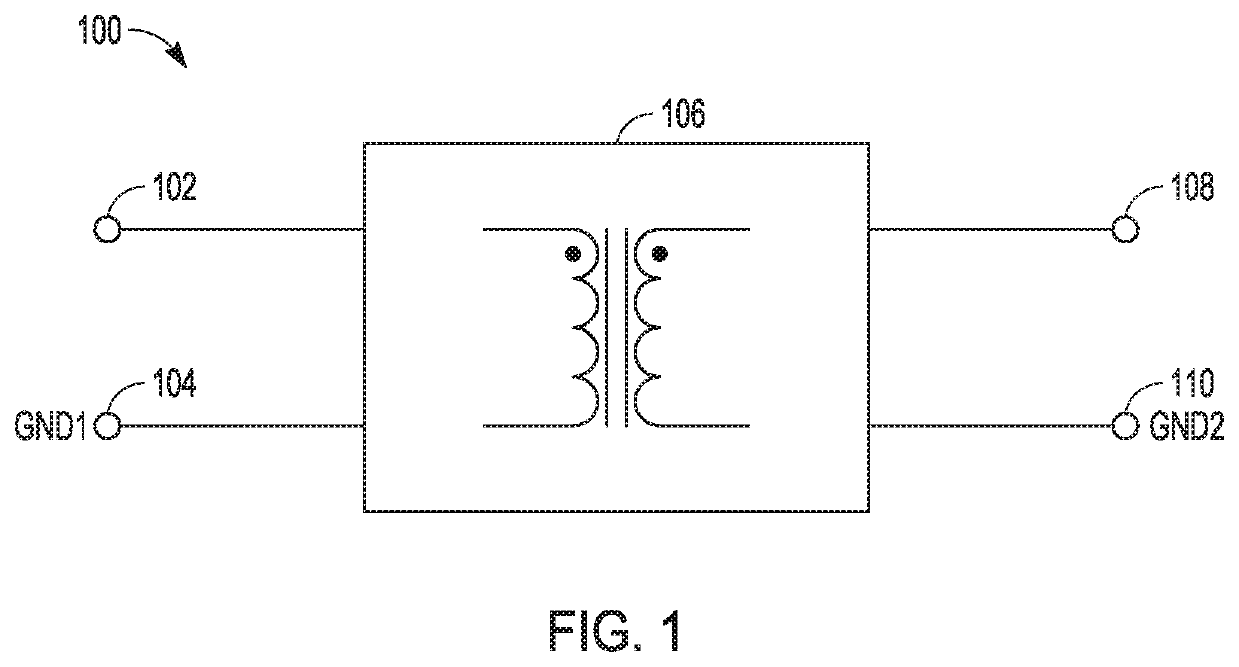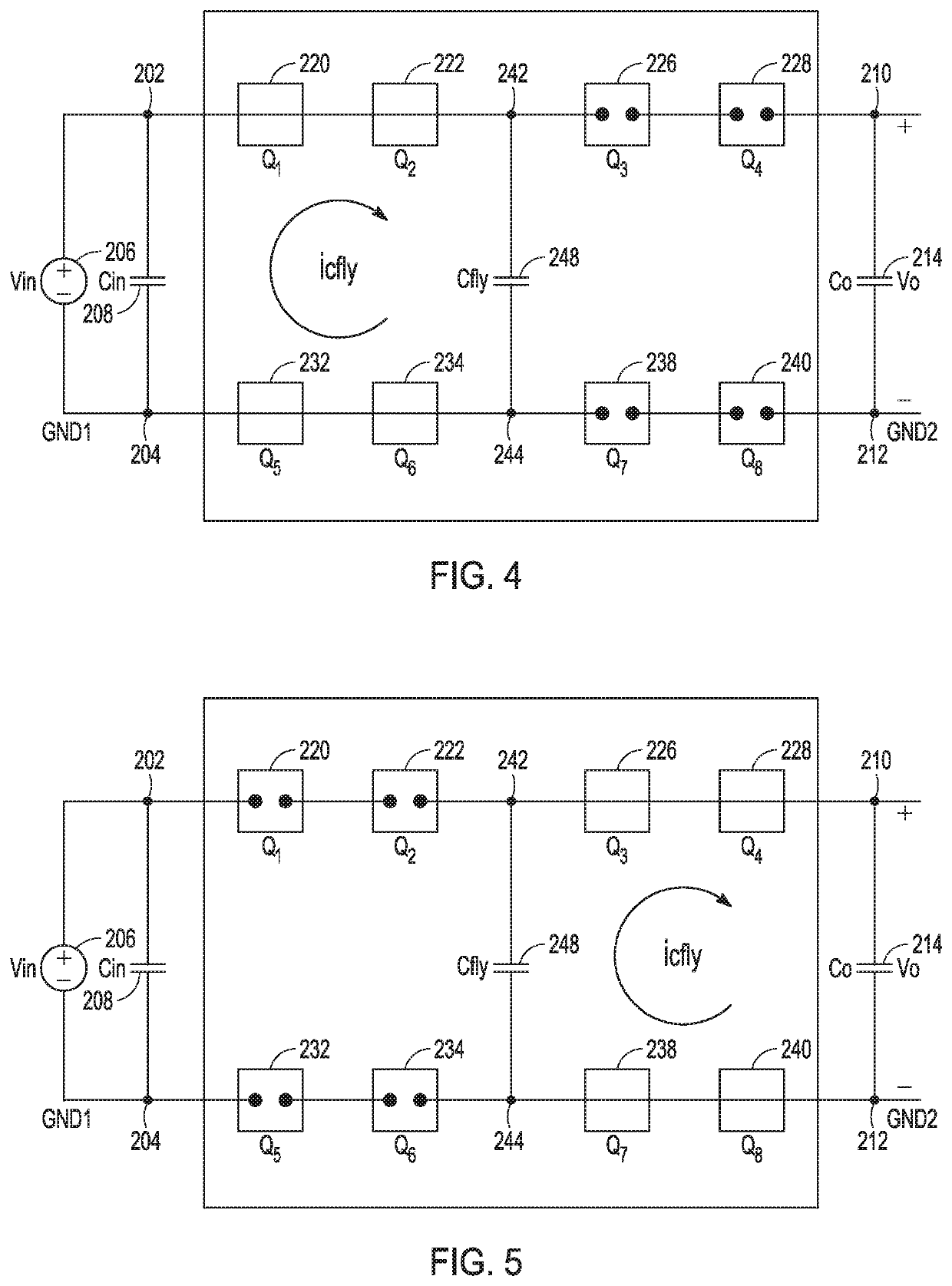Switching converter for power domain separation
a technology of switching converter and power domain, applied in the direction of power conversion system, dc-dc conversion, instruments, etc., to achieve the effect of minimal output filtering and low rippl
- Summary
- Abstract
- Description
- Claims
- Application Information
AI Technical Summary
Benefits of technology
Problems solved by technology
Method used
Image
Examples
Embodiment Construction
[0020]Power systems can include one or more voltage or current converter circuits. A converter circuit can receive an electrical input signal having various input signal characteristics such as magnitude, frequency, and / or phase characteristics. In response to the input signal, the converter circuit can provide an electrical output signal, such as having characteristics that are similar to or different from those of the input signal.
[0021]Power systems can include one or more switches configured to adjust an output signal magnitude, frequency, reference level, and / or phase. Some power systems can include an isolation circuit, such as a transformer, to electrically isolate a converter output stage from a converter input stage using respective sides of the transformer.
[0022]Switched-mode converter circuits, or switching regulators, can provide power conversion, such as including output signal voltage or current regulation, such as using transistor switches that are either on or off. T...
PUM
 Login to View More
Login to View More Abstract
Description
Claims
Application Information
 Login to View More
Login to View More - R&D
- Intellectual Property
- Life Sciences
- Materials
- Tech Scout
- Unparalleled Data Quality
- Higher Quality Content
- 60% Fewer Hallucinations
Browse by: Latest US Patents, China's latest patents, Technical Efficacy Thesaurus, Application Domain, Technology Topic, Popular Technical Reports.
© 2025 PatSnap. All rights reserved.Legal|Privacy policy|Modern Slavery Act Transparency Statement|Sitemap|About US| Contact US: help@patsnap.com



